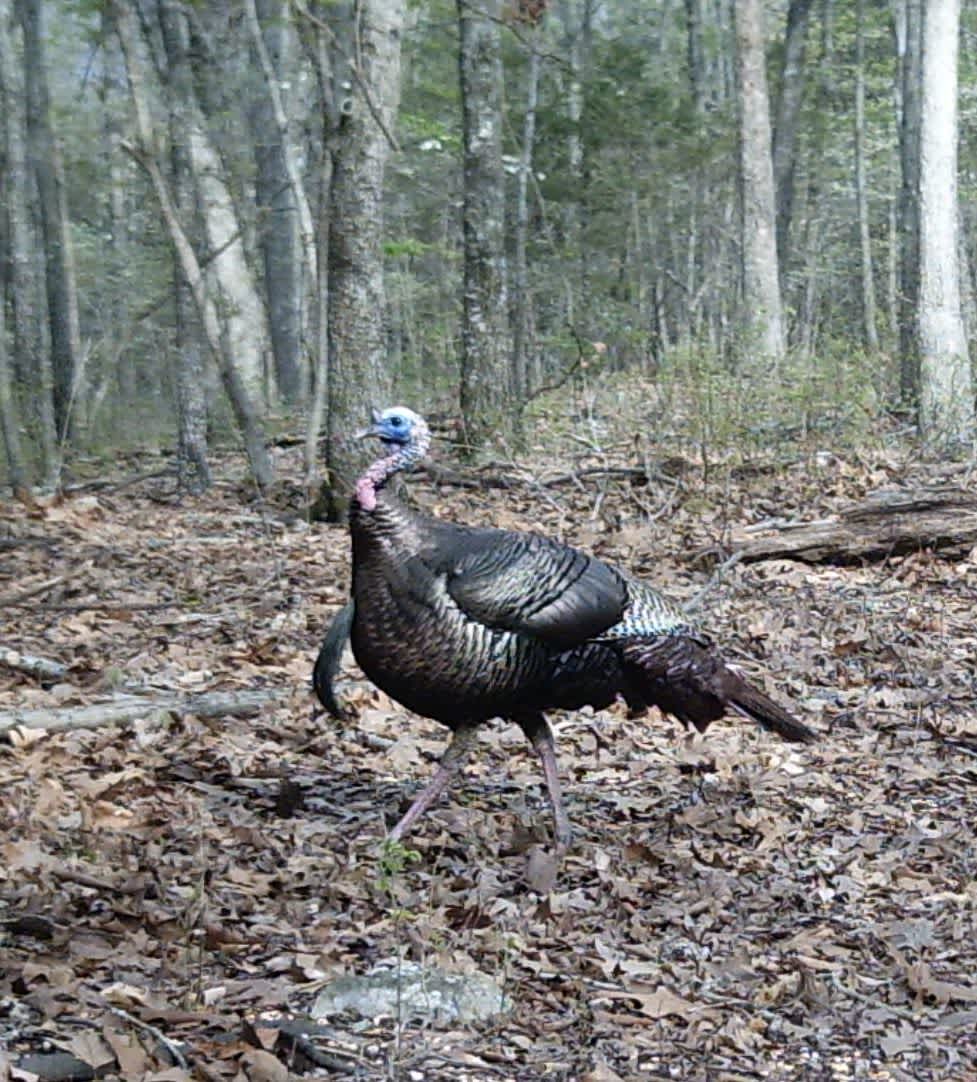How To Turkey Hunt More Successfully
OutdoorHub 05.17.11

1. Scouting
It’s always a good idea to have a map of any area you enter, but even before that you should find out if a particular piece of land is good for turkey hunting. Even if you think you know the area it never hurts to ask local residents, biologists or other field workers who frequently drive around the land and may have spotted birds. Once you know there are turkeys present, you should narrow your search using maps and even satellite images like those found on Google Earth to estimate potential feeding and roosting areas. Now you’ll be ready to log some pre-season truck time by driving backroads a few hours after sunrise. Get out of the vehicle at multiple locations and listen for gobbling birds as they descend from their evening roosts. Nothing (besides pulling the trigger on a big tom) will be more satisfying than hearing that first gobbler of the spring season!
While traipsing through the brush on a promising piece of land, search for tracks and also the scratching marks where birds have scrounged for food. You’ll also want to keep an eye out for droppings and feathers.
2. Guns
The best guns for turkey hunting are those that can pack a punch, casting a dense pattern of lead out to 45 yards; This gun should be a 12 or 10 gauge fitted with a full or extra full choke. You’ll want to use 3 or 3.5 inch shells containing #4, #5 or #6 shot. To figure out the best choke/load combination for your gun you should do some “pattern tests” by firing at a turkey silhouette drawn on a large board or paper target at 40 yards. Once you’re getting 8-10 pellets in the head/neck area, you’re ready to go, but keep firing shots at different yardages to gain some confidence in your effective range.
3. Setup Strategies
As far as spring turkey hunting tips go, you’ll find plenty of advice about how to find birds and what you need to shoot them, but the distance between tips and birds-in-the-bag can be huge. This is not to discourage you, only to say that there are many ways to go about it. If you have a good feeling about a certain field, you might want to set up a ground blind — either natural, or a pop-up/tent style blind — a couple weeks before opening day. But don’t plan your hunt around a specific location. On the day of your hunt or even the night before, drive the same backroads you used for scouting, get out of the truck and listen for gobbles. If they sound far away, they probably are, so be ready for some sneaking. As you close the distance, remember that the only critter with better eyes than a turkey is a hawk. Not only will a gobbler pick up your movement at very long range, but they usually travel in groups, so that can mean a lot of sharp little eyeballs. Even if the terrain and foliage offers protection, it’s not wise to attempt to stalk any closer than 100 yards. If you’re in wide-open country you might want to hunker down at 300-400 yards before you start calling.
4. Calling
Knowing when to call and which type of sound to make can be just as important as knowing how to make them. Instructional videos are great tools for learning the language of gobbles, clucks, purrs, yelps and whines, but nothing beats the tips you’ll pick up when turkey hunting with an experienced friend. While the “gobble” we normally associate with turkeys might be the most fun to imitate, the most successful hunters stick to the sounds of the hen, and they don’t over-do it. There are many different calls designed to mimic various hen sounds, including box calls, slate or synthetic slate friction devices, hands-free diaphragm calls, push-pin and tube calls. Make sure you bring more than one style afield, because one might bring birds in only so far, and you may have to switch calls to get stubborn birds to close the last critical few yards. As the bird or birds get inside of 100 yards you’ll want to remain absolutely still (which is where diaphragm calls come in handy) and have your gun in a position that will require you only to take the safety off and pull the trigger.
5. Camo Gear
Did I mention the great eyesight turkeys have? One thing hunters are most proud of is their camo clothing. They feel invisible in the field, and around town they love it when people look at them and think, Dang, that guy got the day off, today . . . he’s going hunting!
But this is SERIOUS stuff. You really need a good pattern when turkey hunting, especially in the spring season. And, because turkeys can see in color you’ll want to make sure you’ve got some bright green mixed in to match the new leaves. Make sure to avoid anything shiny (leave the Rolex at home), and face masks are a MUST. Don’t forget to wear earth-tone socks as well, because when you sit down against that old oak tree and you’ve got white socks on, you might as well hang a blinking neon sign around your neck.
Follow these tips while turkey hunting this spring season and come Thanksgiving you won’t have to pull a bird from the freezer that says “Butterball” on it.

